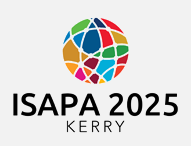Start Date
18-6-2025 9:00 AM
End Date
18-6-2025 10:30 AM
Abstract
Introduction
Hemophilia is a congenital coagulation disorder that typically affects men. Due to reduced activity of coagulation factor, people with hemophilia (pwh) have an increased tendency to bleed. Thanks to modern treatment, pwh can lead a normal everyday life; nevertheless, pwh are still dependent on a regular substitution of coagulation factor. Traditionally, pwh have been advised to avoid physical activity (pa) altogether due to the risk of bleeding events. However, it has been shown that sport can have a positive effect on physical and mental health (Von Mackensen et al., 2016). This study focuses on needs and barriers of young adults with hemophilia with regards to regular physical activity.
Methods
A population of adolescents and young adults with hemophilia (N=25) will take part in a guided pa program, consisting of two sports weekends, with a phase of self-dependent but guided pa in between. Data will be collected on both weekends: participants’ quality of life will be monitored with the Haemo-QOL survey (Von Mackensen et al., 2004) on both weekends. Additionally, focus group interviews will be conducted to gain insight into potential barriers for participation in sporting activities.
Results
Data was and will be collected in November 2024 and May 2025. Haemo-QOL results from t1 will be compared to results from t2. Existing research results already point to the high benefits of sport and pa for people with hemophilia (Von Mackensen et al., 2016). This is mirrored in the results from interviews conducted on t1. Anyhow, different categories of barriers (e.g. personal, social) can be conceptualized from the interviews.
Recommended Citation
Nauschuetz, Tabea and Theobald, Ulrich, "Chances and challenges for physical activity in adolescents and young adults with hemophilia" (2025). International Symposium of Adapted Physical Activity and International Symposium on Physical Activity and Visual Impairment and Deafblindness. 1.
https://sword.mtu.ie/isapa/2025/day3/1
Chances and challenges for physical activity in adolescents and young adults with hemophilia
Introduction
Hemophilia is a congenital coagulation disorder that typically affects men. Due to reduced activity of coagulation factor, people with hemophilia (pwh) have an increased tendency to bleed. Thanks to modern treatment, pwh can lead a normal everyday life; nevertheless, pwh are still dependent on a regular substitution of coagulation factor. Traditionally, pwh have been advised to avoid physical activity (pa) altogether due to the risk of bleeding events. However, it has been shown that sport can have a positive effect on physical and mental health (Von Mackensen et al., 2016). This study focuses on needs and barriers of young adults with hemophilia with regards to regular physical activity.
Methods
A population of adolescents and young adults with hemophilia (N=25) will take part in a guided pa program, consisting of two sports weekends, with a phase of self-dependent but guided pa in between. Data will be collected on both weekends: participants’ quality of life will be monitored with the Haemo-QOL survey (Von Mackensen et al., 2004) on both weekends. Additionally, focus group interviews will be conducted to gain insight into potential barriers for participation in sporting activities.
Results
Data was and will be collected in November 2024 and May 2025. Haemo-QOL results from t1 will be compared to results from t2. Existing research results already point to the high benefits of sport and pa for people with hemophilia (Von Mackensen et al., 2016). This is mirrored in the results from interviews conducted on t1. Anyhow, different categories of barriers (e.g. personal, social) can be conceptualized from the interviews.

